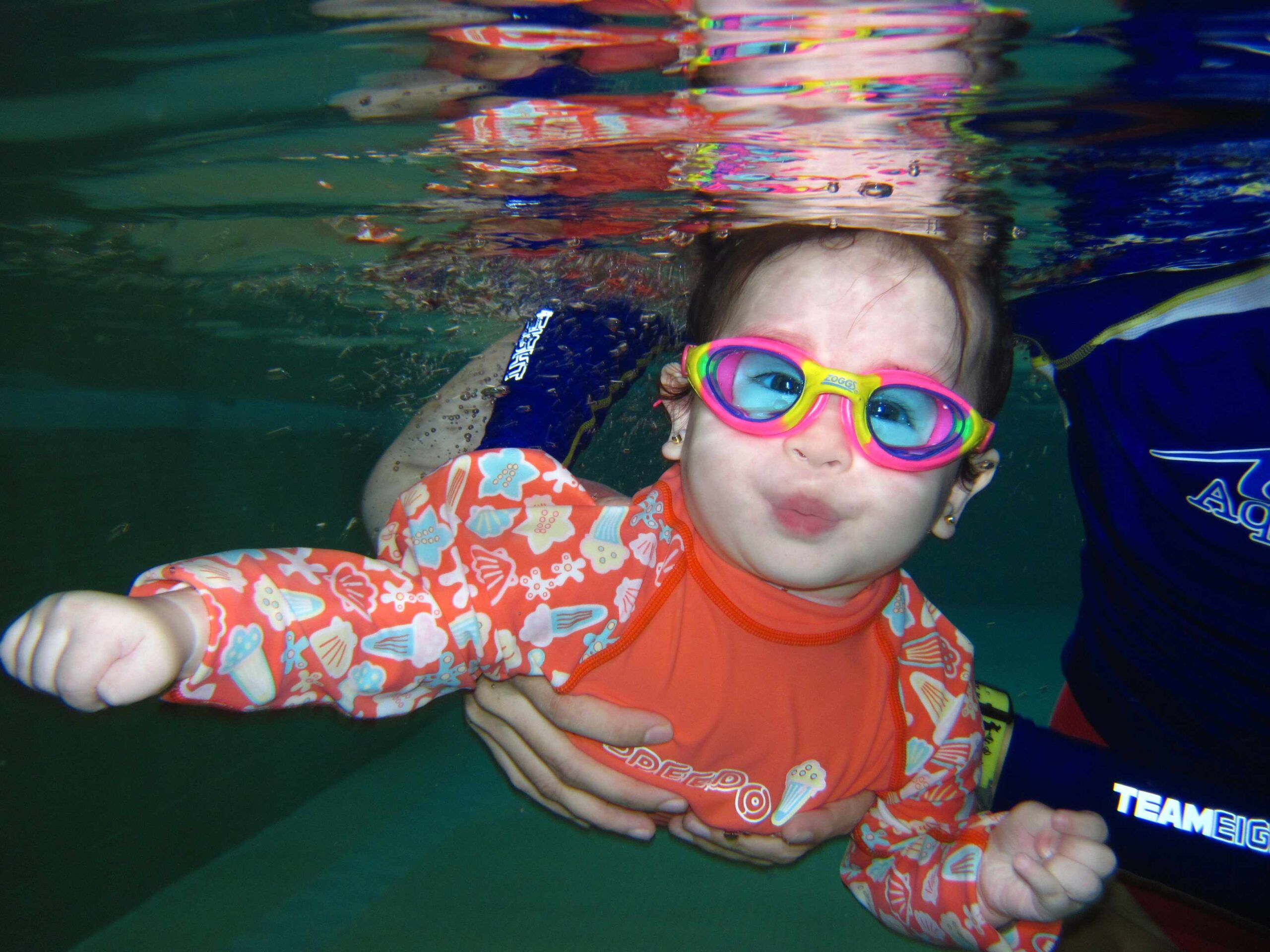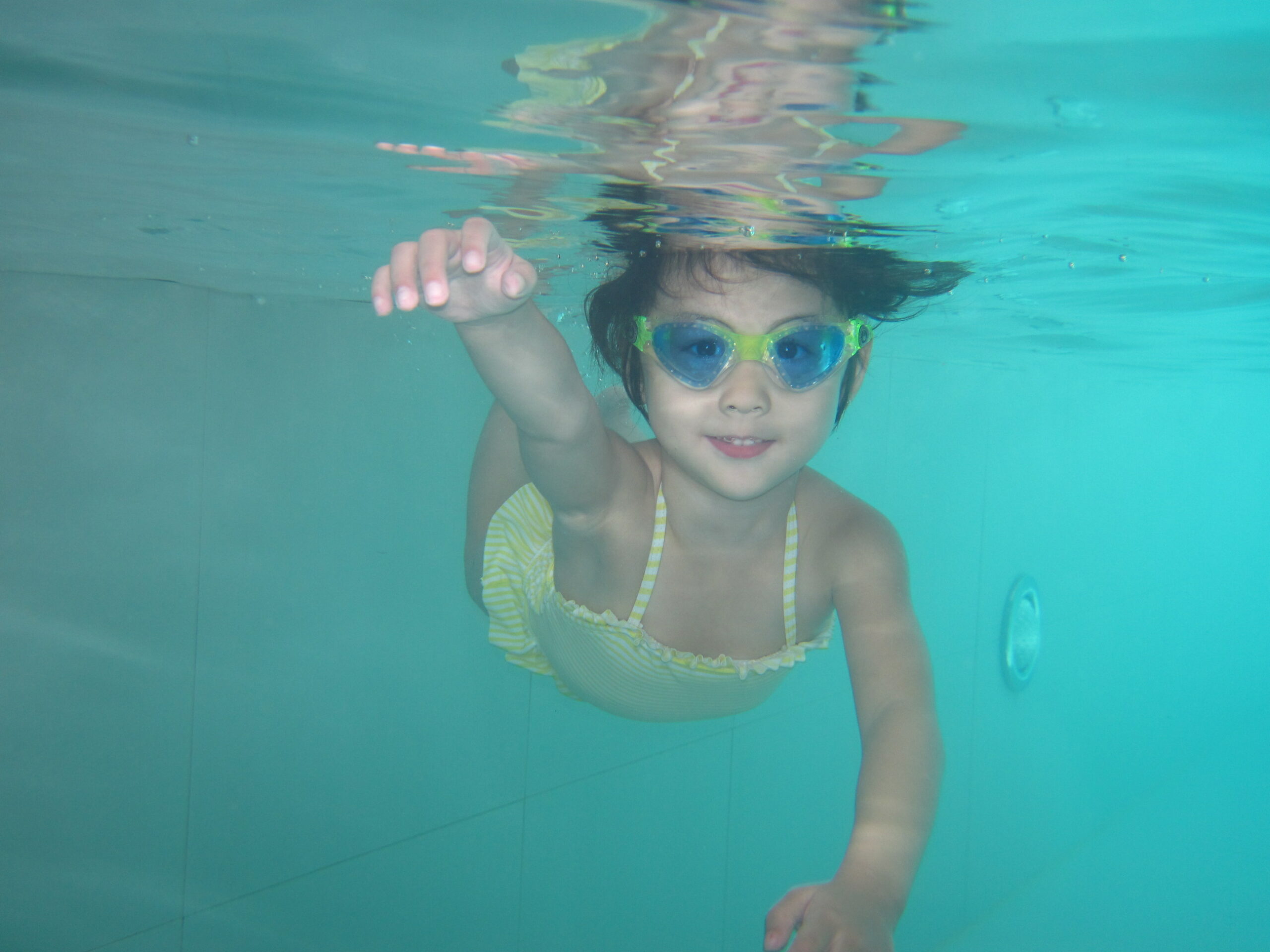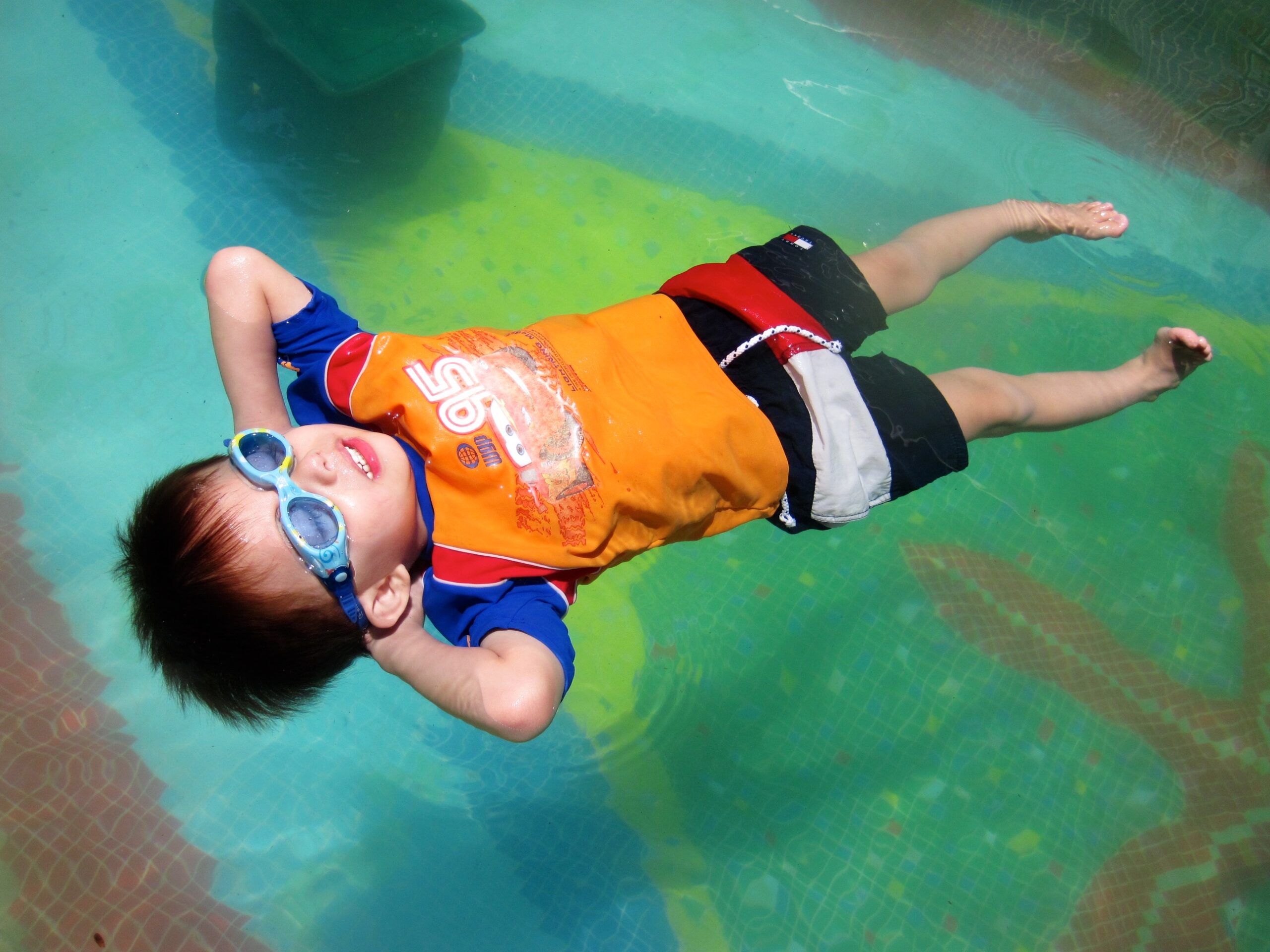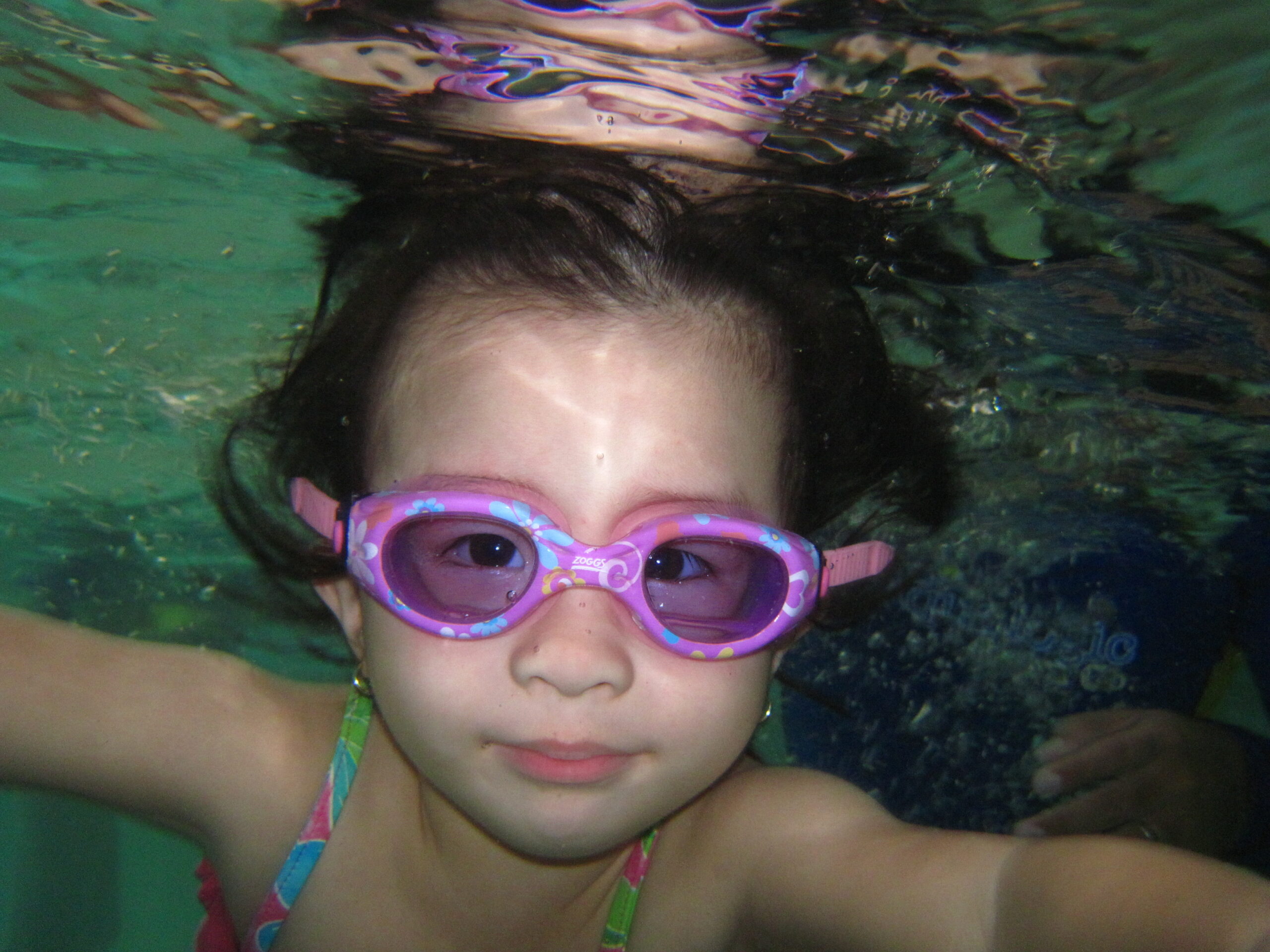
Pre-School Learn-to-Swim – 3 years old
Using a learning thru play format, pre-school age children transition from swimming with parent/guardian to independent learning.


Benefits of the Program
- Develop safety skills and positive attitudes towards the water
- Builds character and self-confidence
- Promotes discipline and independence
- Peer Learning
- Improve level of physical fitness
- Establish camaraderie and team spirit among fellow students
- Set a positive foundation towards a lifetime of enjoyment in water-related activities
- Learning through play with the use of colorful toys and equipment to ensure an enjoyable learning experience. A nurturing, non-traumatic approach in teaching


Skills Your Child Will Learn
Beginner
-
- Safe Pool Entry
- Breath Management
- Comfortably put head under water
- Flutter Kick
- Float on Back with Assistance
- Swim Independently for short distances (2-5 meters)
- Retrieve Toys from the bottom of the pool with assistance
- Jump (off the side of the pool) – Turn & Swim (back to wall)
Intermediate
-
- Retrieve toys from the bottom of the pool without assistance
- Swim independently with head underwater for 5-8 meters
- Bob head up for a breath
- Independent Stationary Back float
- Propel oneself on back independently
- Swim in prone position and roll over to back float
- Tread in deep water
- Elementary Backstroke


Swim Goals
Level 1
- Safety Entry & Exit
- Independent from Parent/Guardian
- Listens to instructions and waits for their turn
- Bubbles on the surface
- Assisted Starfish float – cheek to cheek
- Assisted Active Backfloat – cheek to cheek (with kicks)
- Assisted Elementary Backstroke – cheek to cheek
- Prepared for Water Pouring over head and face
- Flutter Kick with barfloat – head above water
- Assisted sitting jump- head above water
- Assisted Monkey Walk on wall
Level 2
- Safety Entry & Exit
- Bubbles face in
- Assisted Starfish float – nape and forehead/chin hold
- Assisted Active Backfloat – chin hold (with kicks)
- Assisted Elementary Backstroke – chin hold
- Assisted retrieval of toys from the steps / shallow water
- Flutter Kick with barfloat – head underwater
- Assisted sitting jump, turn 180 degrees, and grab wall – head down
- Unassisted Monkey Walk on wall
Level 3
- Bubbles whole head underwater
- Unassisted Starfish Float – 10-15 seconds
- Partially-assisted Active Backfloat (with kicks)
- Partially-assisted Elementary Backstroke
- Assisted dive game – get toys from pool floor
- Swims 5-10 seconds Unassisted with Assisted pop-up breaths
- Assisted Roll-over from front to back
- Unassisted jump, turn 180 degrees, and grab wall
- Assisted Knee Dives
Level 4
- Improve Horizontal Balance (Streamline)
- Unassisted Starfish float – 20-30 secs
- Unassisted Active Backfloat (with kicks)
- Unassisted Elementary Backstroke
- Assisted Backstroke (with arms)
- Lengthen swim distance to at least 5 meters
- Unassisted Dive Game – retrieve toys from pool floor
- Swims 7-12 seconds with Unassisted Pop-up Breaths
- Swims 7-12 seconds and Unassisted Roll-over from front to back
- Treading water 3-5 seconds
- Standing jump-swim, turn 180 degrees, roll-over and swim to wall
- Unassisted Knee Dives
Our Packages
AquaTots 1
3 YEARS OLD – accompanied by parent/guardian in the pool for the first 4-8 lessons
- BEGINNER / FEARFUL of the water
- NOT COMFORTABLE TO PUT HEAD UNDERWATER
- DOES NOT LIKE TO SEPARATE from Parent/Guardian
- Teacher : Student Ratio: 1 : 5
- Class Duration: 45 Minutes
2x a week
₱9,815 / 8 Lessons
Once a week
₱10,800 / 8 Lessons
AquaTots 2
3 YEARS OLD
- BEGINNER BUT NO FEAR OF WATER
- Can move along confidently in shallow water
- INDEPENDENT and NO NEED to be accompanied in the pool
- Teacher : Student Ratio: 1 : 5
- Class Duration: 45 Minutes
2x a week
₱9,815 / 8 Lessons
Once a week
₱10,800 / 8 Lessons
AquaTots 3
3 YEARS OLD
- Can PUT HEAD UNDERWATER
- Can swim short distances without breath
- INDEPENDENT and NO NEED to be accompanied in the pool
- Teacher : Student Ratio: 1 : 5
- Class Duration: 45 Minutes
2x a week
₱9,815 / 8 Lessons
Once a week
₱10,800 / 8 Lessons
AquaTots 4
3 YEARS OLD
- Graduated from AquaBabes class
- Can retrieve dive toys from pool floor with assistance
- Can swim short distances with pop up breath or roll over on back (swim-float-swiim)
- Can jump into the water-turn-grab on the side of the pool
- Teacher : Student Ratio: 1 : 5
- Class Duration: 45 Minutes
2x a week
₱9,815 / 8 Lessons
Once a week
₱10,800 / 8 Lessons
Note:
Annual Registration Fee – ₱1,000 per student
Frequently Asked Questions
Will my child be drown-proofed after taking swim lessons?
No one is ever drown-proof. Utmost caution must always be in effect in and around water. Adult supervision and barriers between your child and the pool are your best defense for reducing the risk against an aquatic accident. However, as your child reaches new levels in their swimming skills, they will eventually be able to perform maneuvers that can increase their chances of getting to safety if an unsupervised water entry were to occur.
These achievements should never give parents or caregivers a false sense of security. We make it a priority to educate parents on all aspects of water safety. (i.e… supervision, barriers, pool safety fencing, and child-centered swimming lessons).
What safety skills are we referring to?
The following safety skills are all potentially life saving for an experienced student who is comfortable in the water and who has had adequate training. Children must be comfortable and ready.
- Jump, Turn, and Grab – This is the most practical method of self rescue for infants and toddlers as the majority of accidents occur near the edge of pool or other bodies of water. Children need to be comfortable in the water and strong swimmers before this skill is introduced. Building a foundation is very important so children are not stressed in the learning process or panic during an accident.
- Bobbing the Head – Recovering one’s head above the surface allows a toddler to take a bite of air. However teaching this skill to a child too soon creates a vertical body position, impeding progress through the water.
- Rolling over to one’s back/ Backfloat – Allows the toddler to float on his back to breathe.However, we only teach this skill when the child is ready and can maintain effortless balance.
My pediatrician says I should wait to start until my child is 4 years old?
For many years, the American Academy of Pediatrics (AAP) stated that children are not developmentally ready to learn to swim until they are 4 years old. However, on May 24, 2010, AAP updated their guidelines on water safety and drowning prevention. In its updated policy, the AAP has revised its guideline on swimming lessons and also highlights new drowning risks.
Jeffrey Weiss, lead author of the policy statement says, “To protect their children, parents need to think about layers of protection. Children need to learn to swim. Swimming lessons can be an important part of the overall protection, which should include pool barriers and constant, capable supervision.”
The statement goes on to say that new evidence shows that children ages 1 to 4 may be less likely to drown if they have had formal swimming instruction. This new guideline is a monumental change that indicates that the AAP recognizes the evidence that U.S. Swim School Association member schools have been promoting for years: formal swim lessons are a vital part of the multilevel approach to drowning prevention and water safety.
The AAP offers a specific 11 point advice list for parents that includes:
- Never leaving children without adult supervision around any type of water;
- Closely supervise children at all times;
- Inquiring about exposure to water when your children are not in your care;
- Installing appropriate fencing and gate systems around pools
- Providing swimming lessons to children;
- Learning CPR;
- Not using air-filled swimming aids
- Wearing life-jackets when children are in boats;
- Knowing water depth and underwater hazards before allowing children to jump in any body of water;
- Swimming at lifeguard supervised open bodies of water; and
- Counseling teenagers on the increased risk of drowning when alcohol is involved.
What should I do if my child cries during his first swim lesson?
Crying or resistance is not a prerequisite to learning how to swim. However, some children react negatively when introduced to a new environment. Parents should stay calm and encourage the child to participate even if he/she is crying. There may be cases when the instructor may need to set the child aside to address the child’s fear or issue.
Parents should give the instructor an opportunity to bond with the child as they have been trained to handle different situations in the pool. It maybe heartbreaking for the parent to see their child cry when first introduced to the swim program, but with proper handling, positive reinforcement, and a regular routine, children learn to eventually love the water despite their initial reaction to their first swim lesson.
It usually takes about 3-5 lessons to get a fearful or anxious child to warm up to the class. Many have found our method of teaching swimming very effective for children, especially those who are fearful or those who have had a traumatic experience in the water.We take the time to let children feel that the pool is a pleasant and safe place to be in.
Children who have developed fear or a repulsive attitude towards the water will usually cry, but with the combination of structured play and discipline, they calm down and achieve comfort in the water.
What do you think about floatation devices?
Kids love floaties because they can jump in the pool from the side and pop back up to the surface and roam about the water on their “own.” Parents love floaties because they give children a little more independence in the water without parent or guardian always having to hold them.
We know it’s difficult to have multiple children in and around the water, especially when there’s only one parent supervising multiple kids. Sometimes parents have kids use flotation devices to have a little more peace of mind.
Flotation devices have their place and can be appropriate at times. But we also believe floaties can delay your child’s swim progress when used too frequently.
Sometimes kids can get so comfortable wearing a flotation device that they use it as a crutch. When they come to swim lessons and don’t have a flotation device on, they have to re-learn how to be comfortable in the water all over again.
Your child’s swim instructor spends a lot of time getting your child comfortable with the water and learning different skills. If your child goes home and practices what they’ve learned at lessons with their floaties on, they aren’t getting a chance to practice the skills they just learned.
Floaties teach children to operate in a vertical position. Much of our time in swim lessons is focused on teaching swimmers how to be in a horizontal position. Flotation devices can also create a false sense of confidence in the water for both children and parents. Sometimes children are very comfortable in the water as long as they have their floaties on. They don’t truly know how to swim—they know how to stay vertical.
Children should know what their true swimming ability is without a flotation device, so they are aware of their safety in and around water. A child with a false sense of security may try to slip through a floatie, or jump into the pool without it, thinking they can swim.
If you have multiple children to supervise and they must use a flotation device, make sure to practice some time without a flotation device each time they are in the water. Keep them in swim lessons year round and they will pick up the skills they need in order to be independent in the water.
Children can pick up basic swimming skills and floating at a young age when practiced regularly. Don’t spend hundreds of dollars on swim lessons, only to put them in a floatie and undo all of the hard work at home.
Flotation devices should never serve as a substitute for active supervision. All children, regardless of their swimming ability should be actively supervised when they are in or around the water at all times.
Reference : https://www.seaotterswim.com/keep-child-swim-floaties-home
How long does it take a child to learn to swim and how often should my child take swim lessons?
Just like in any acquired skill, swimming requires training and experience to do well. Learning the different swimming skills will depend on your child’s development and background.
Just like going to school where you start from playschool to preschool, then to elementary, high school and all the way up to college, we also follow different levels in teaching swimming. It usually takes 8-24 lessons to master particular swim skills in any level.
- AquaBabes (Infant/Toddler program) is like playschool / AquaTots (3 years) – is like pre-school where children transition from inin the pool where young children is first introduced to water activity and eventually develop basic swim skills.
- AquaKids (4-14 years) is like our elementary level where the children have acquired safety swim skills and are introduced to rudimentary strokes.
- AquaTech (15 years and up) is like our highschool and college level where we fine tune the strokes for efficiency.
Most swim lessons range from 30 – 60 minutes per lesson. Children progress faster with more practice. The problems that many students and parents face are availability, affordability and scheduling. Is there a program close by? Is there room in our every day family schedule? Can we afford all the lessons? Everyone’s situation is different, but a continuing regiment of lessons throughout the year is best. Whe ther it is once-a-week during the school year and every day in the summer, or twice-a-week year ‘round, the results will be good with that much exposure.
Parents and students get frustrated when they are not as good at the beginning of “this summer” as they were at the end of “last summer”, yet they had no lessons or only a few exposures to swimming all during the school year.
Swimming is a skill that takes practice. You don’t learn over-night and you can’t retain the skills year-to-year without practice. Think of taking piano lessons for 2 weeks this summer and then again until 2 weeks next summer. Did you improve your skills? Without practice during the year you are probably staring over. Swimming, unless practiced, will have the same results.
We usually offer a minimum package of 8 lessons per enrollment, but most of our students renew month per month to further enhance their swim skills.
How can I help my child be successful in the swimming lessons?
All students need times when they can learn through exploration. Swimming is a sport or recreational activity that will last a lifetime. Your child, whether he/she is a beginner or more advanced, needs to go to the pool and have time just to play. This is also a time when children will begin to practice and develop important skills and techniques while they are having fun. Many children only go to the pool for class and so never get any practice time or enjoyment from being there. Positive reinforcement from the parents will encourage your children to develop love for the water. Children whose parents show enjoyment for the water tend to learn faster that those who have parents who don’t.
Playing in the pool also build the child’s strength, stamina and general skills. Going to the pool and playing with your child under safe, supervised conditions is one of the best ways to help your child be successful in swimming lesson.
What should I bring to the AquaTots Swimming Lessons?
- Swim Suit
A snugly-fit bathing suit or swim trunks to ensure free movement and less drag for the little swimmer.
- Rash Guards / Sun suits
To reinforce sun protection, we encourage all our students to wear a rash guard or a sun suit over their bathing suit. These suits are usually made of spandex, lycra or polyester,and the material has an inherent SPF (Sun Protection Factor). If you or your child gets cold easily in the water, we recommend to wear a NEOPRENE wet suit over your swimsuit to keep warm during swimming lessons.
For custom-made rash guards and wetsuits, please contact Lisa Guevara at 09175268112.
- Goggles
Our young swimmers can focus and learn better when they can see clearly underwater. Getting them the right pair of goggles is very important. You should have your child try on the goggles before you purchase them to ensure that it is comfortable, fit well, and is easy to adjust. Tinted lenses are recommended if you swim outdoors to protect the eyes from the glaring rays of the sun.
We have ZOGGS™ and AQUA SPHERE™ goggles for sale. Please email aqualogic.booking@gmail.com or call 09178979678 to order.
- Swim Diapers
Children are required to wear swim diapers (even if they are potty trained) to reduce the risk of deadly bacteria released in the water. We highly recommend the double nappy system. This means a swim nappy (disposable or reusable) must be worn with a neoprene nappy over the top.
We carry SPLASH ABOUT HAPPY NAPPY DUO, the most advanced reusable swim nappy in the world. Please email aqualogic.booking@gmail.com or call 09178979678 to order.
- Big Towel / Bath Robe
You want to make sure that you dry off your child when you take them out of the pool and wrap your child with a towel or a robe to keep them warm after their swim lesson.
- Waterproof Sunscreen
If you will be swimming in an outdoor pool, we have to protect our child from the harmful rays of the sun by using a sunscreen specifically formulated for babies/children. Apply sunscreen at least 30 minutes before the swim lesson to let the skin absorb it, and to also avoid any excess lotion running down the child’s eyes. Trust us on the sunscreen!
We carry SUN BUM Sun Care Products, Water-Resistant, Hypoallergenic, Cruelty-free, and made without Parabens or Gluten. Please email aqualogic.booking@gmail.com or call 09178979678 to order.
- Non-Slip Slippers or Shoe
We highly-recommend that the students and parents wear non-slip shoes or slippers around the pool deck to avoid any accidents since the area is always wet.
